Country
Operator Image

Crash of a Boeing 737-275 in Calgary
Date & Time:
Mar 22, 1984 at 0742 LT
Registration:
C-GQPW
Survivors:
Yes
Schedule:
Calgary - Edmonton
MSN:
22265/755
YOM:
1981
Flight number:
PW501
Crew on board:
5
Crew fatalities:
Pax on board:
114
Pax fatalities:
Other fatalities:
Total fatalities:
0
Aircraft flight hours:
7447
Circumstances:
Pacific Western Airlines scheduled early morning flight 501 to Edmonton was pushed-back from the gate at 07:35. After engine start the aircraft taxied to runway 34 for departure. Takeoff was begun at 07:42 from the intersection of runway 34 and taxiway C-1. About 20 seconds into the takeoff roll, at an airspeed of approximately 70 knots, the flightcrew heard a loud bang which was accompanied by a slight veer to the left. The captain immediately rejected the takeoff using brakes and reverse thrust. Both the crew members suspected a tire on the left main landing gear had blown. The captain decided to taxi clear of the runway at taxiway C-4. Approaching C-4, the crew a.o. noted that left engine low pressure unit rpm was indicating 0 per cent. Twenty-three seconds after the initiation of the rejected takeoff, the first officer called clear of the runway on tower frequency: "501 clear here on Charlie 4". The purser then entered the flight deck and reported a fire on the left wing. The control tower then confirmed that there was a fire: "Considerable amount off the back - on the left side engine there - and - eh - it's starting to diminish there. Eh - there's a fire going on the left side." One minute and two seconds had passed since the initiation of the rejected takeoff. Immediately after this the purser further stated that "the whole left-hand side, the whole back side of it is burning". The captain discharged a fire bottle into the engine and the first officer requested emergency equipment. At an elapsed time of 1 minute 36 seconds, the cockpit fire warning bell activated. Simultaneously, the purser re-entered the cockpit and reported that it was getting bad at the back. The captain stopped the aircraft the crew then carried out the procedures for an emergency evacuation, which was initiated at an elapsed time of 1 minute 55 seconds. All 119 occupants were evacuated, among them 29 were injured. The aircraft was destroyed.
Probable cause:
The accident was the consequence of the combination of the following factors:
- An uncontained rupture of the left engine thirteenth stage compressor disc occurred approximately 1,300 feet into the take-off roll,
- Failure of the disc was the result of fatigue cracking at three main locations in the rear snap and adjacent to 6 of the 12 tie-bolt holes,
- Fatigue cracking initiated as a result of an unidentified combination of factors which developed progressively over an undefined period of time, following the last major overhaul in May 1981,
- Some stator repair procedures carried out at the last major overhaul were not in accordance with the provisions of the Pratt & Whitney JT8D engine overhaul manual; as a result, deficiencies in the thirteenth stage stator assembly occurred,
- The ruptured piece of the compressor disc exited the engine and penetrated the left lower inboard wing skin, puncturing a fuel cell,
- Fuel leaking from the punctured fuel cell was ignited instantaneously,
- The fuel-fed fire increased in size and engulfed the left wing and aft section of the aircraft.
- An uncontained rupture of the left engine thirteenth stage compressor disc occurred approximately 1,300 feet into the take-off roll,
- Failure of the disc was the result of fatigue cracking at three main locations in the rear snap and adjacent to 6 of the 12 tie-bolt holes,
- Fatigue cracking initiated as a result of an unidentified combination of factors which developed progressively over an undefined period of time, following the last major overhaul in May 1981,
- Some stator repair procedures carried out at the last major overhaul were not in accordance with the provisions of the Pratt & Whitney JT8D engine overhaul manual; as a result, deficiencies in the thirteenth stage stator assembly occurred,
- The ruptured piece of the compressor disc exited the engine and penetrated the left lower inboard wing skin, puncturing a fuel cell,
- Fuel leaking from the punctured fuel cell was ignited instantaneously,
- The fuel-fed fire increased in size and engulfed the left wing and aft section of the aircraft.
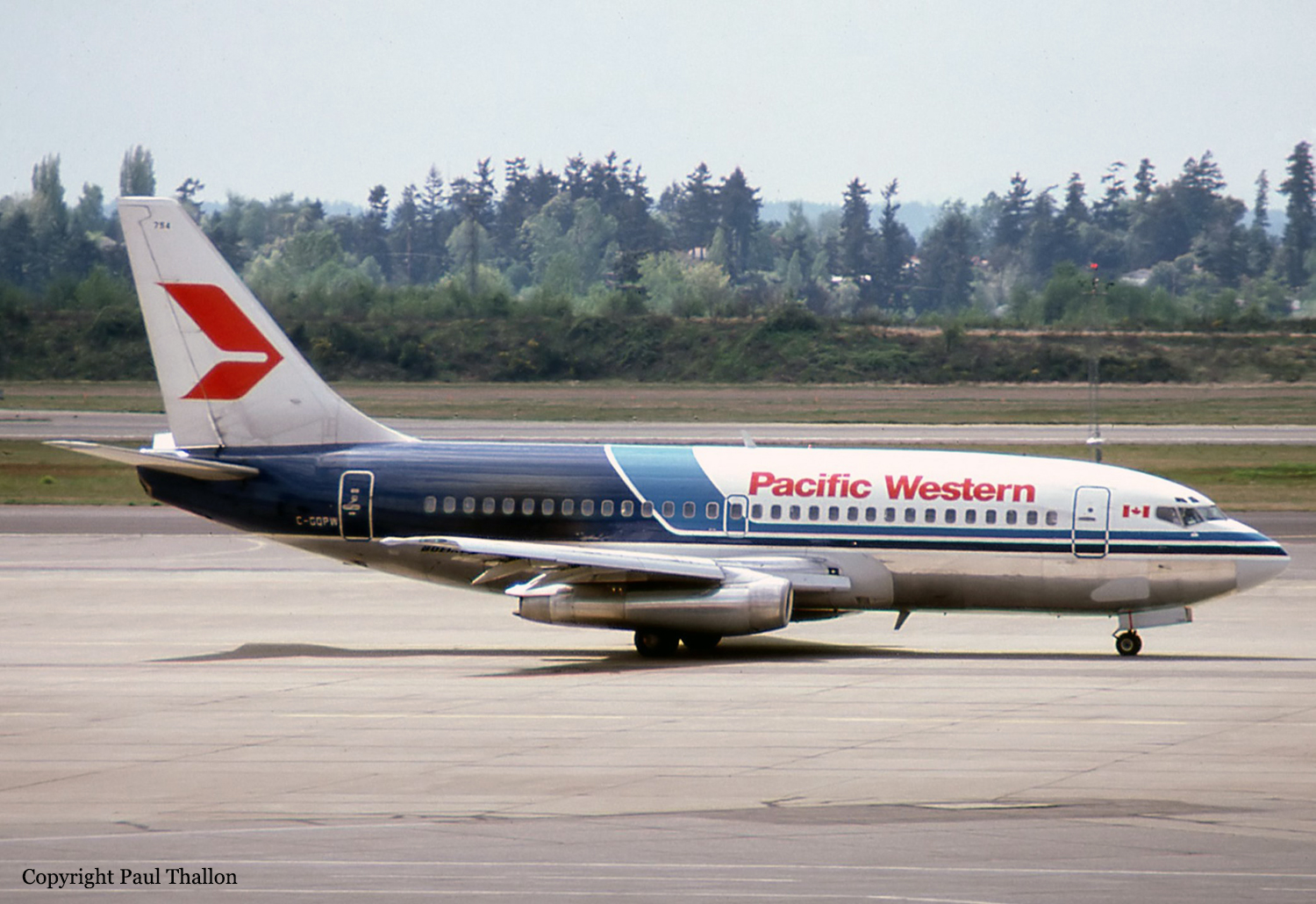
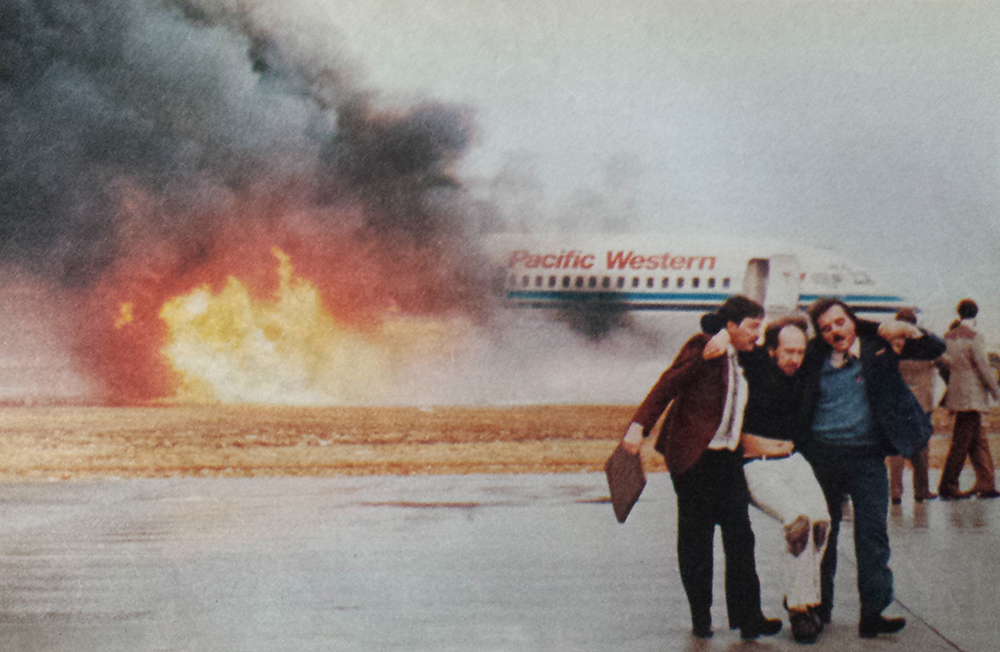
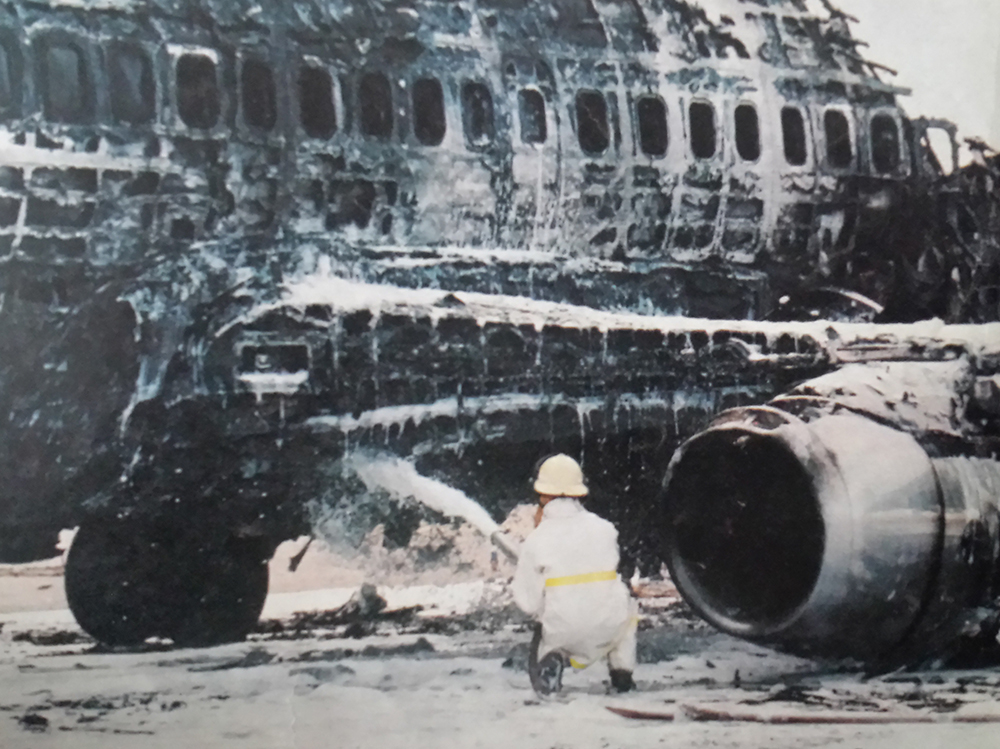
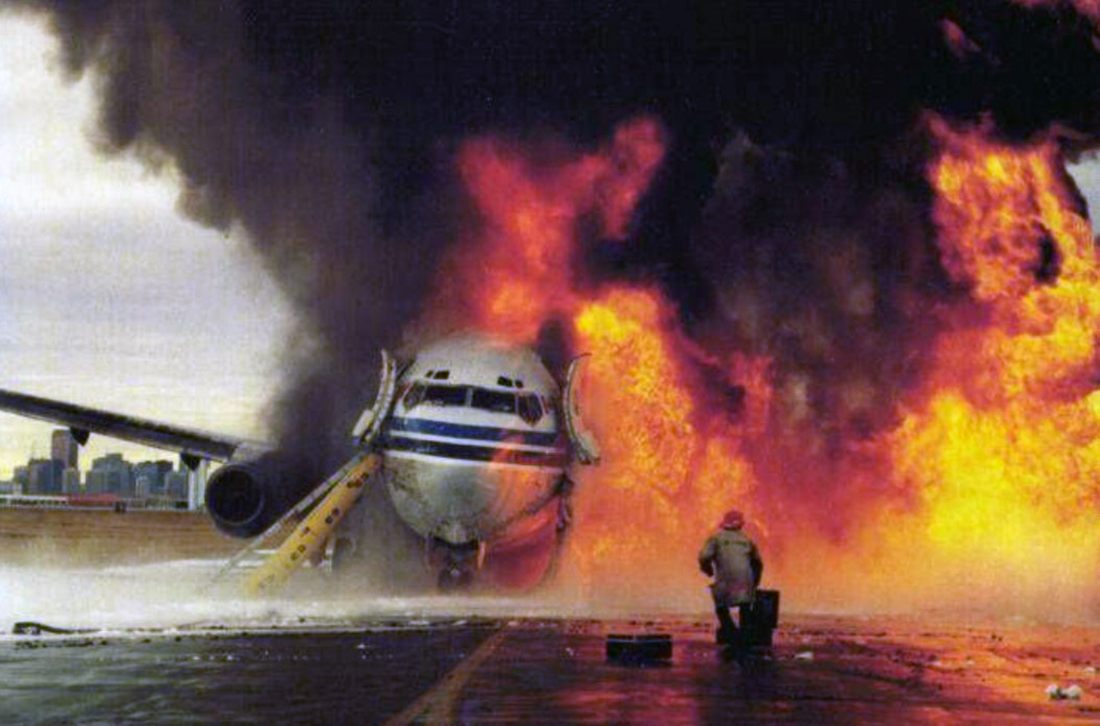
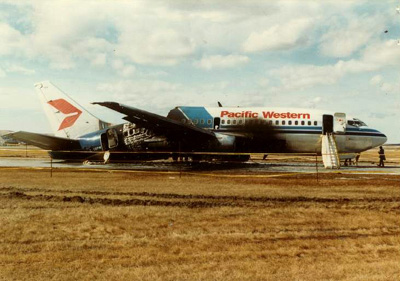
Crash of a Boeing 737-275 in Cranbrook: 42 killed
Date & Time:
Feb 11, 1978 at 1255 LT
Registration:
C-FPWC
Survivors:
Yes
Schedule:
Fort McMurray – Edmonton – Calgary – Cranbrook – Castlegar
MSN:
20142/253
YOM:
1970
Flight number:
PW314
Crew on board:
5
Crew fatalities:
Pax on board:
44
Pax fatalities:
Other fatalities:
Total fatalities:
42
Captain / Total hours on type:
2780.00
Copilot / Total hours on type:
81
Circumstances:
Pacific Western Airlines flight 314 was a scheduled Boeing 737 service from Fort McMurray, Aberta, to Castlegar with stops at Edmonton, Calgary and Cranbrook, B. C. The flight departed Calgary at 1932Z 11 February 1978, for Cranbrook with a Company estimated time enroute of 23 minutes. This estimate was passed to the Company Agent in Cranbrook. Flight 314 was cleared by Calgary Air Traffic Control to Cranbrook via high level airway 505, and reached the assigned altitude of 20,000 feet at 1938Z. Air Traffic Control in Calgary transmitted an ETA (estimated time of arrival) of 2005Z to Cranbrook Aeradio, via the land line. Cranbrook is an "uncontrolled" airport without a control tower, but within controlled airspace, with an "Aeradio" station providing communications, weather, and advisory service. At Cranbrook it was snowing with the visibility reported as 314 of a mile, and a radio equipped snow removal vehicle was sweeping the runway. The Aeradio operator at Cranbrook alerted the vehicle operator about the incoming aircraft at 1935Z and gave him the ETA of 2005Z; they both expected the flight would report by the "Skookum Beacon" on a straight-in approach to runway 16, thus giving the vehicle operator about seven minutes to get off the runway. At 1942Z Flight 314 called Calgary and requested and received descent clearance; it was also given clearance for the approach to Cranbrook. At 1944Z, the flight called out of 18000 feet in the descent, and Calgary ATC advised the flight to contact Aeradio. At 1945Z, Flight 314 made initial contact with Cranbrook Aeradio and at 1946Z Cranbrook passed the latest weather, altimeter and runway information. At 1947Z Cranbrook Aeradio advised the flight that snow removal was in progress and gave the latest visibility; Flight 314 acknowledged. No further transmissions were received from the flight by Aeradio or ATC. Evidence indicates the aircraft passed the Skookum beacon inbound on a straight-in instrument approach, and flew the ILS for runway 16 to touchdown.' According to witnesses and estimates partially derived from flight data recorder information, the aircraft touched down at 1955Z approximately 800 feet from the threshold and reverse thrust was selected. Reverse thrust was cancelled immediately after touchdown and a go-around was initiated. The aircraft became airborne prior to the 2000 foot mark, and flew down the runway at a height of 50 to 70 feet, flying over a snow removal vehicle which was still on the runway, 2050 feet from the threshold and 20 feet from the right edge. About this time the left engine thrust reverser doors deployed. A few seconds later, the flap was selected up from 40° to 15°. The landing gear remained down and locked. Six seconds before impact and just over 4,000 feet from the runway threshold, the flight recorder data indicates that a large amount of left rudder was momentarily applied. The aircraft climbed to 300 to 400 feet above the airfield, banked steeply to the left, lost height and side-slipped into the ground to the left of the runway. Fire broke out on impact. Four crew members and 38 passengers were killed while seven other occupants were killed.
Probable cause:
The following findings were reported:
- The estimated time of arrival of the aircraft at Cranbrook, calculated by Calgary ATC, and used by Aeradio for advisory purposes was considerably in error and resulted in a traffic conflict between the arriving aircraft and a vehicle working on the runway,
- The flight crew did not report by the Skookum beacon on final approach, as was the normal practice at Cranbrook, thereby allowing the incorrect ETA to remain undetected,
- Regulatory provisions concerning mandatory pilot position reporting during instrument approaches were inadequate,
- The interfaces between the organizations providing Air Traffic Services, Telecommunications (Aeradio) and Airports Services were not well enough developed to provide a reliable fail-safe flight information service,
- The pilots lost control of the aircraft consequent upon the left engine thrust reverser deploying in flight when the aircraft was at low speed, and in a high drag configuration,
- The FAA design standards under which the Boeing 737 was constructed did not adequately provide for the possibility of an aborted landing after touchdown and thrust reverser initiation,
- The lack of a suitable national system of incident reporting, investigation, and follow-up corrective action allowed operational problems to remain uncorrected,
- Rescue efforts at the accident scene were hampered due to lack of a fire fighting vehicle capable of negotiating deep snow and shortage of trained rescue personnel.
- The estimated time of arrival of the aircraft at Cranbrook, calculated by Calgary ATC, and used by Aeradio for advisory purposes was considerably in error and resulted in a traffic conflict between the arriving aircraft and a vehicle working on the runway,
- The flight crew did not report by the Skookum beacon on final approach, as was the normal practice at Cranbrook, thereby allowing the incorrect ETA to remain undetected,
- Regulatory provisions concerning mandatory pilot position reporting during instrument approaches were inadequate,
- The interfaces between the organizations providing Air Traffic Services, Telecommunications (Aeradio) and Airports Services were not well enough developed to provide a reliable fail-safe flight information service,
- The pilots lost control of the aircraft consequent upon the left engine thrust reverser deploying in flight when the aircraft was at low speed, and in a high drag configuration,
- The FAA design standards under which the Boeing 737 was constructed did not adequately provide for the possibility of an aborted landing after touchdown and thrust reverser initiation,
- The lack of a suitable national system of incident reporting, investigation, and follow-up corrective action allowed operational problems to remain uncorrected,
- Rescue efforts at the accident scene were hampered due to lack of a fire fighting vehicle capable of negotiating deep snow and shortage of trained rescue personnel.
Final Report:
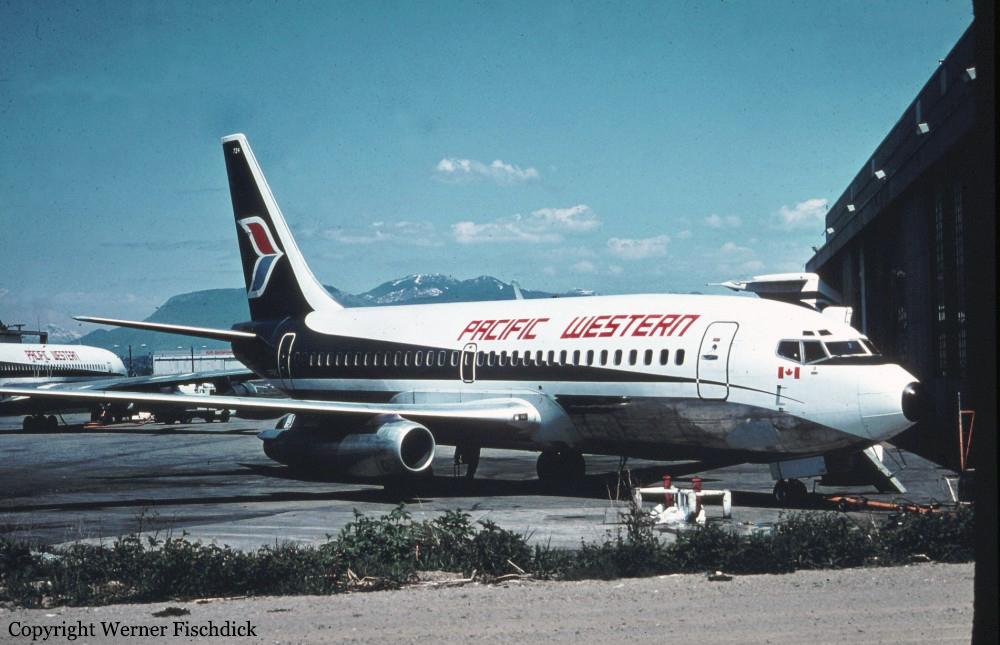
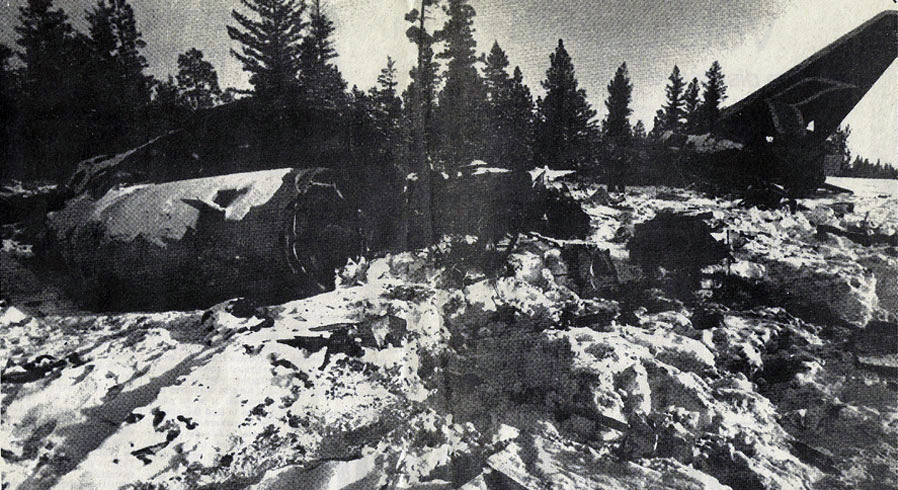
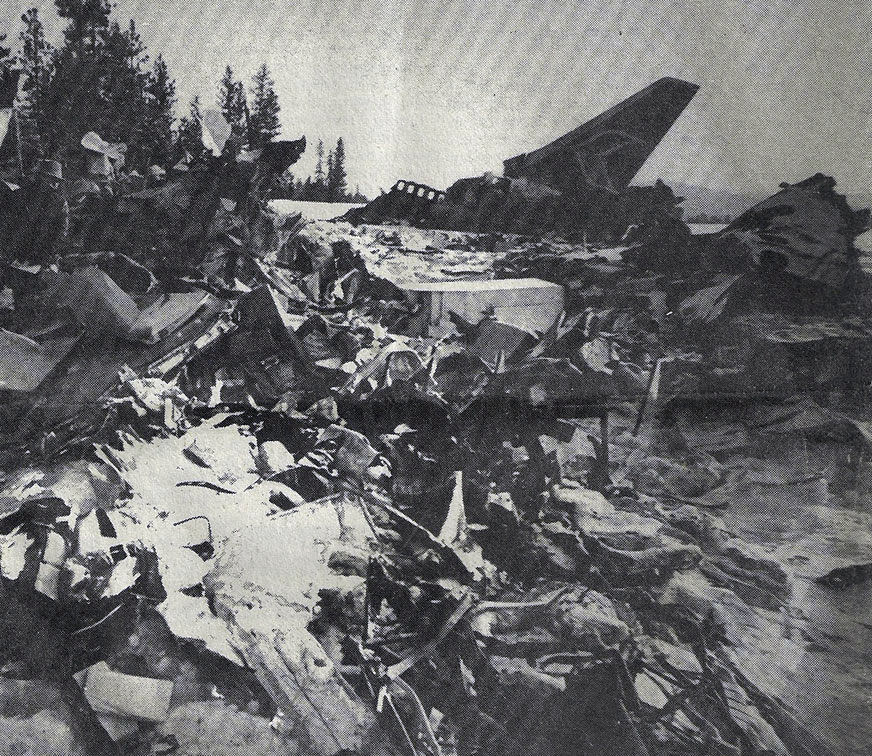
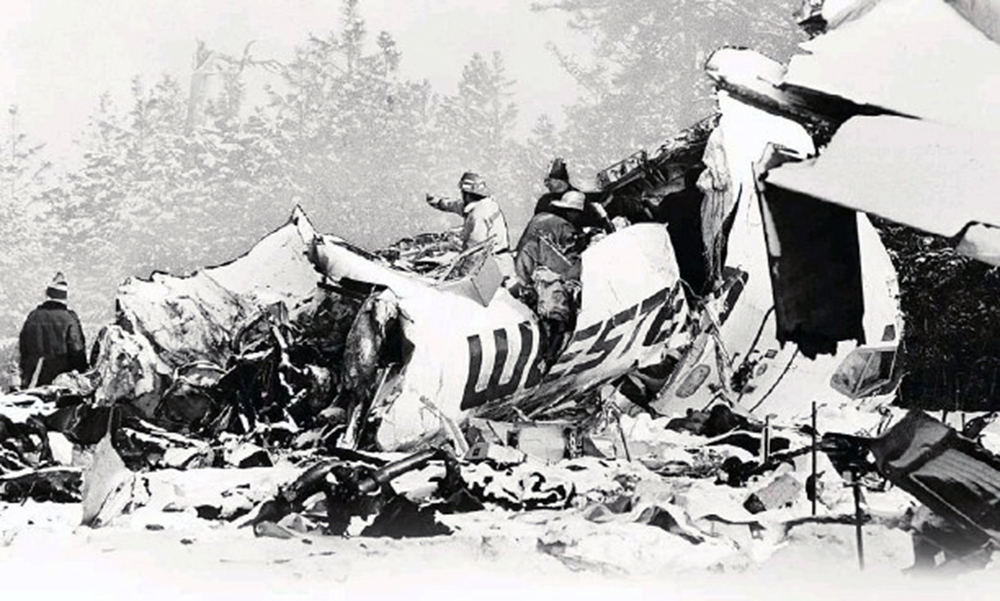
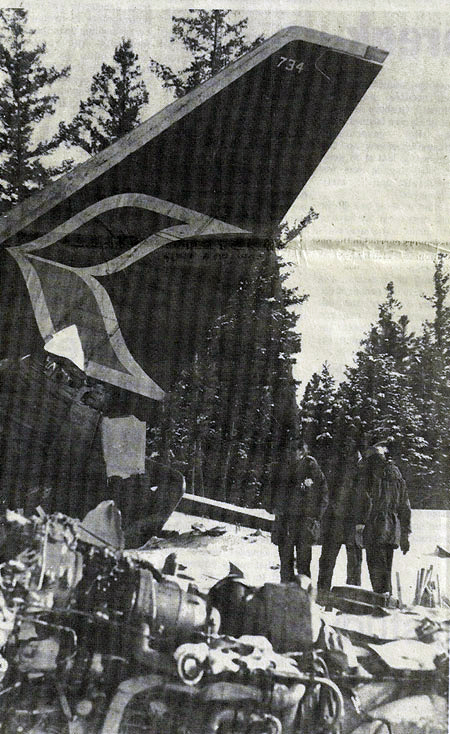
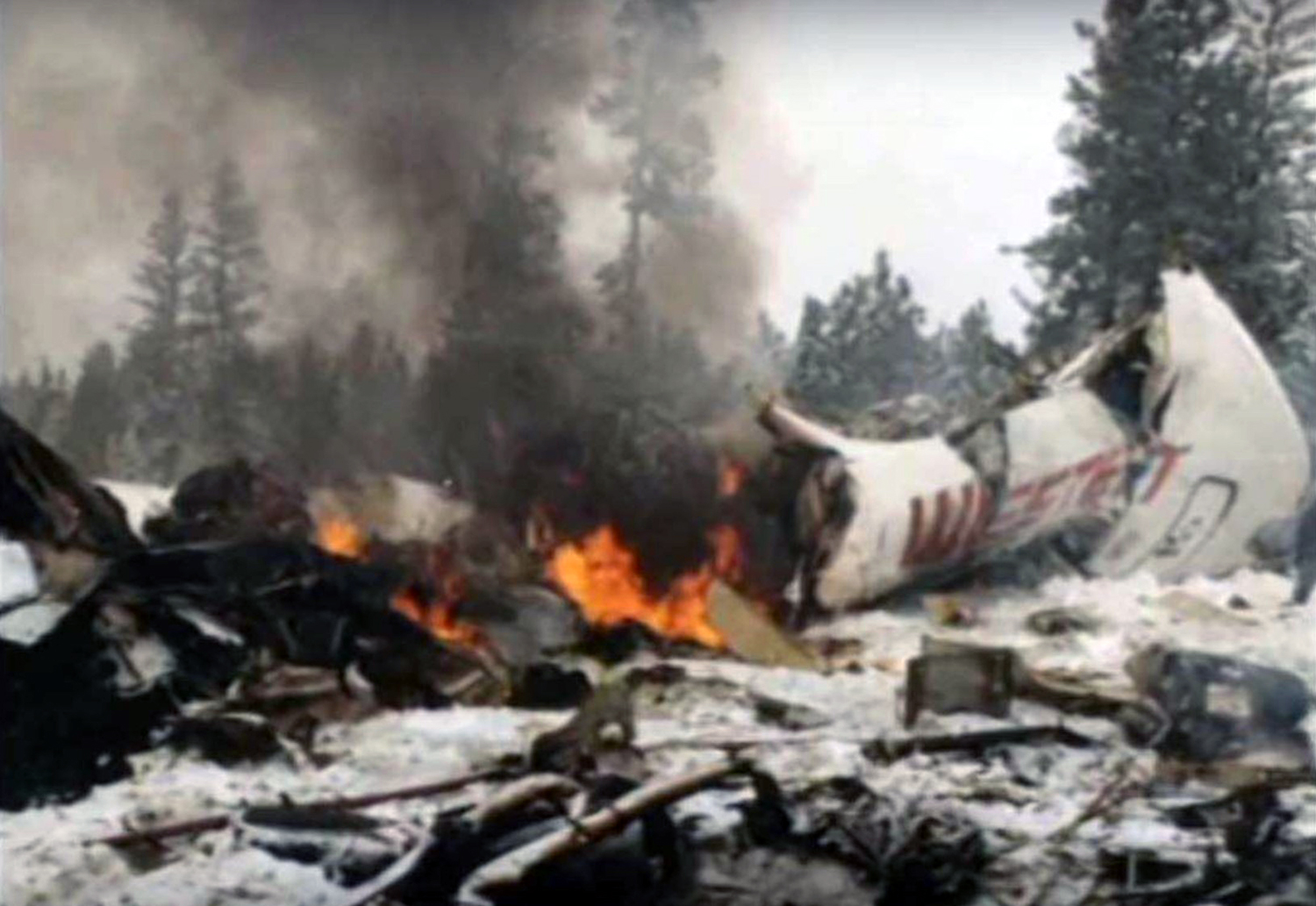
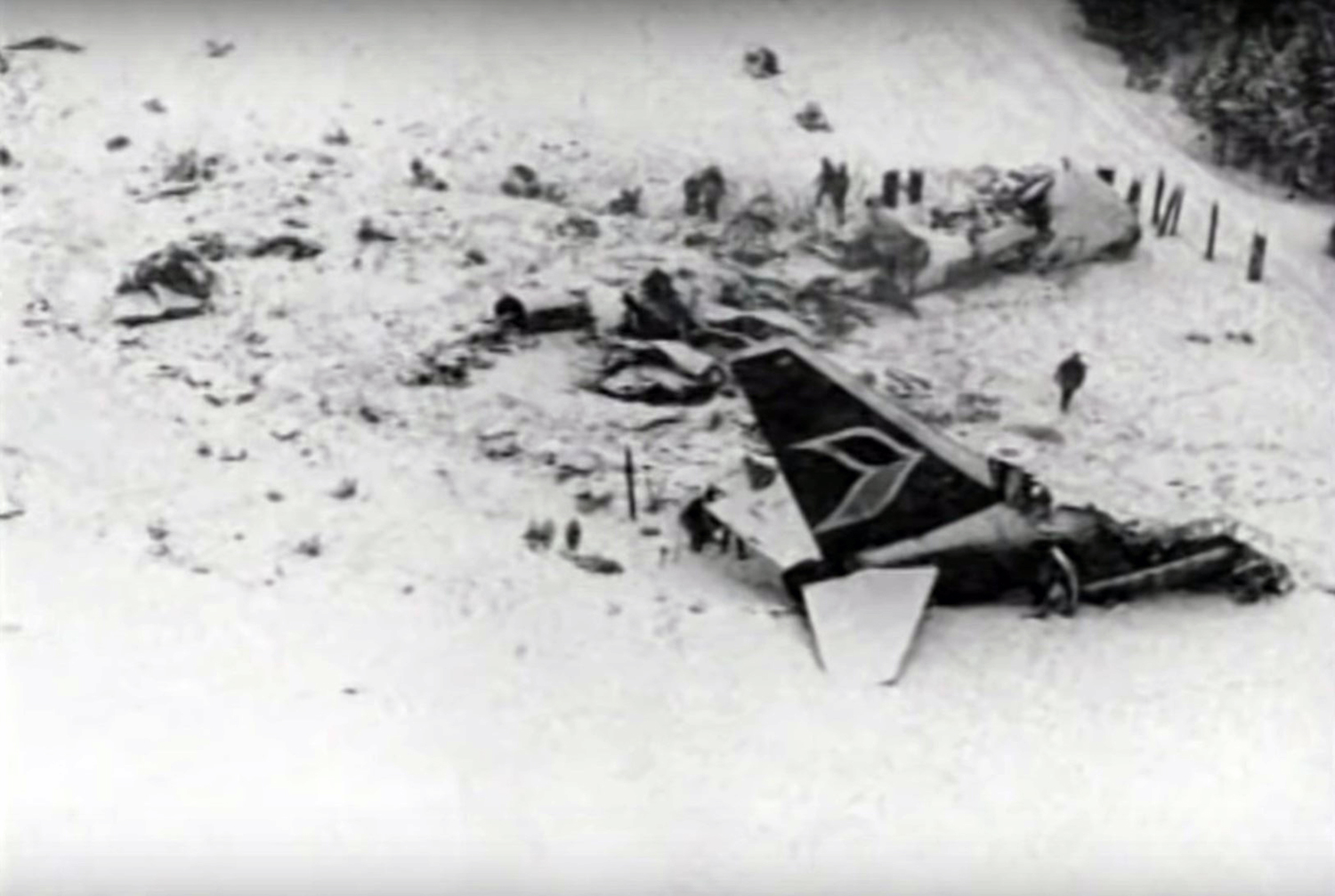
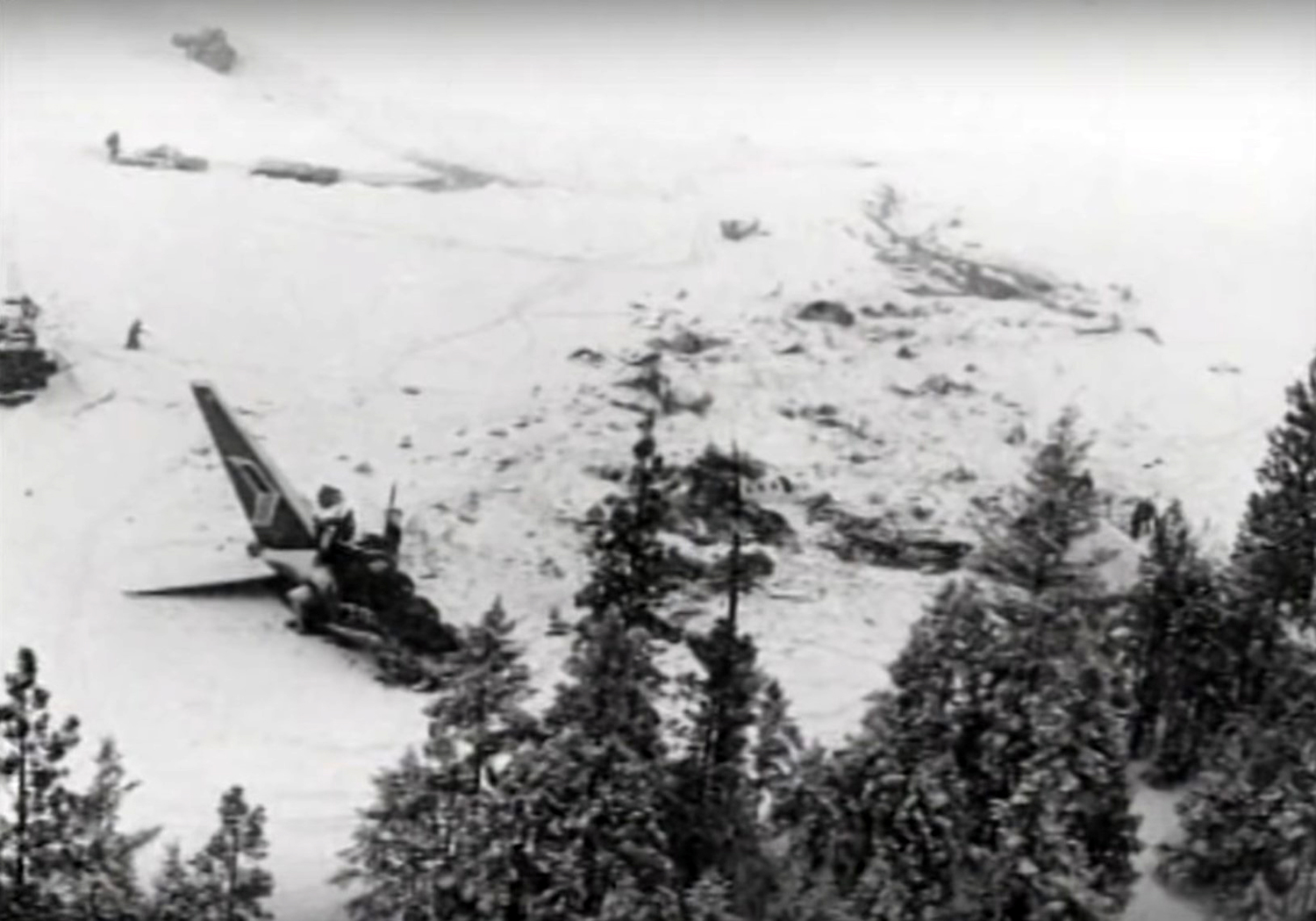
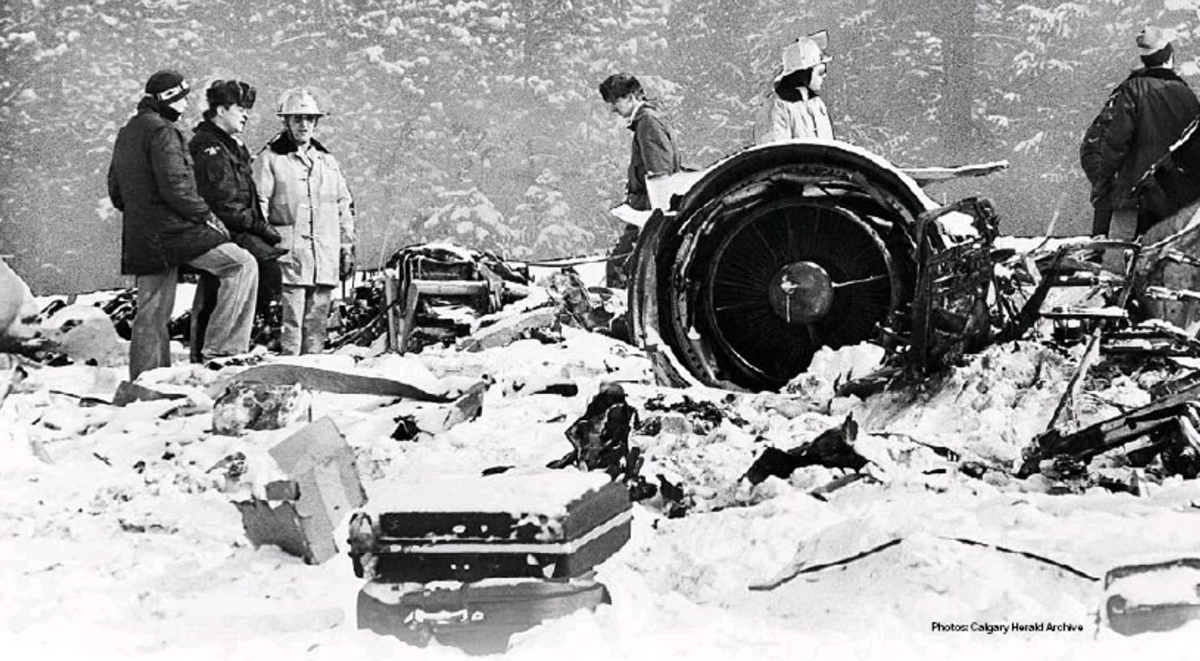
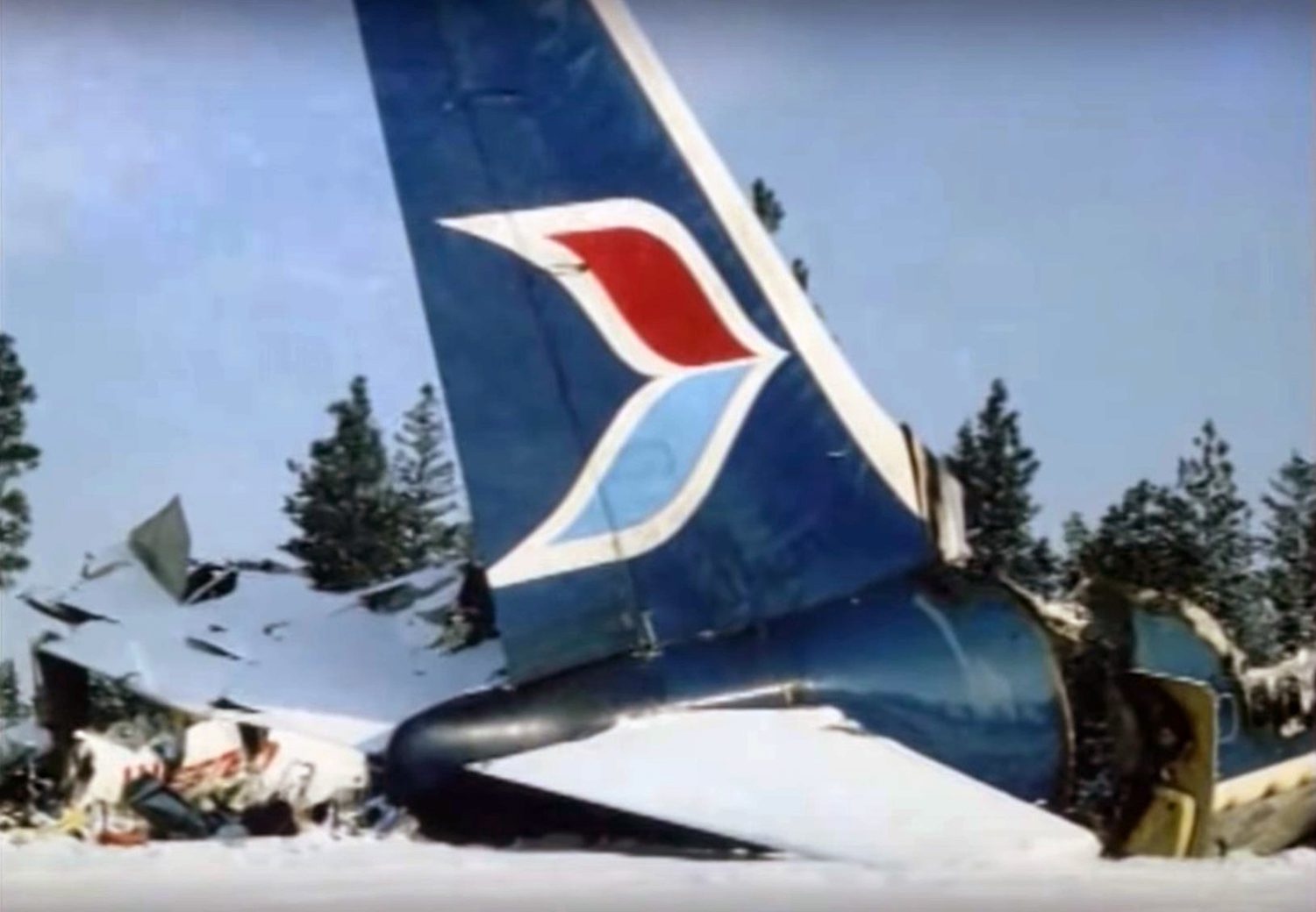
Crash of a Lockheed L-382E-18C Hercules in Lubumbashi: 6 killed
Date & Time:
Nov 21, 1976
Registration:
CF-PWX
Survivors:
No
Schedule:
Ostende - Lubumbashi
MSN:
4361
YOM:
1969
Crew on board:
6
Crew fatalities:
Pax on board:
0
Pax fatalities:
Other fatalities:
Total fatalities:
6
Circumstances:
On final approach to Lubumbashi Airport while on a cargo flight from Ostende, the pilot-in-command failed to realize his altitude was too low when the airplane struck a 30 metres high tree with its right wing. Upon impact, the right wing was partially torn off. The airplane lost height and crashed few hundred metres short of runway threshold. All six occupants were killed.
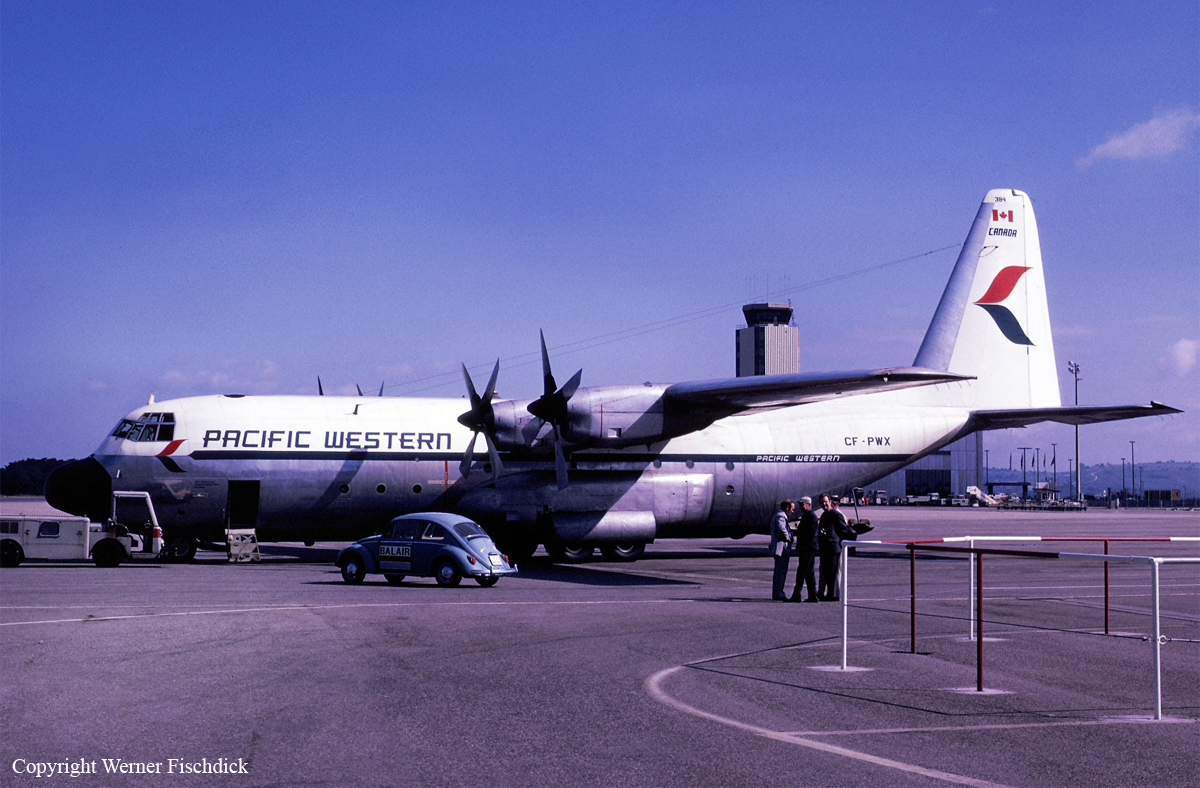
Crash of a Boeing 707-321C in Edmonton: 5 killed
Date & Time:
Jan 2, 1973 at 0034 LT
Registration:
CF-PWZ
Survivors:
No
Schedule:
Toronto – Edmonton – Vancouver – Seoul
MSN:
18826
YOM:
1964
Flight number:
PW3801
Crew on board:
3
Crew fatalities:
Pax on board:
2
Pax fatalities:
Other fatalities:
Total fatalities:
5
Aircraft flight hours:
33059
Aircraft flight cycles:
9458
Circumstances:
The airplane was engaged in a cargo flight from Toronto to Seoul with intermediate stops in Edmonton and Vancouver, carrying two passengers, three crew members and a load of 86 Holsteins cows. Following an uneventful flight, the crew was cleared for an ILS approach to runway 29. At this time, weather conditions were considered as poor with limited visibility due to the night, snow falls and turbulences as a cold front was approaching the area. The copilot was in command and due to various factors, he failed to realize that the sink rate was too high on short final when the captain decided to regain control. Then the airplane struck poplar trees located 3,137 meters short of runway and electric cables, stalled and crashed in flames in a gravel pit located less than three km from the airfield. The aircraft was destroyed and all five occupants and 86 cows were killed.
Probable cause:
It was determined that the crew was tired at the time of the accident and that the captain was on duty since 29 hours without sufficient rest time. Approach procedures negligences and poor crew coordination affected flight conditions. Difficult weather conditions with low clouds, snow falls and turbulences contributed to the difficulty of the flight conditions, as well as the fact that the copilot was inexperienced. It was reported he was recently promoted on B707 and this was his first approach following a six-week holiday period. Finally, the crew encountered technical issues with the generators on engines n°1 and 4 on final approach.
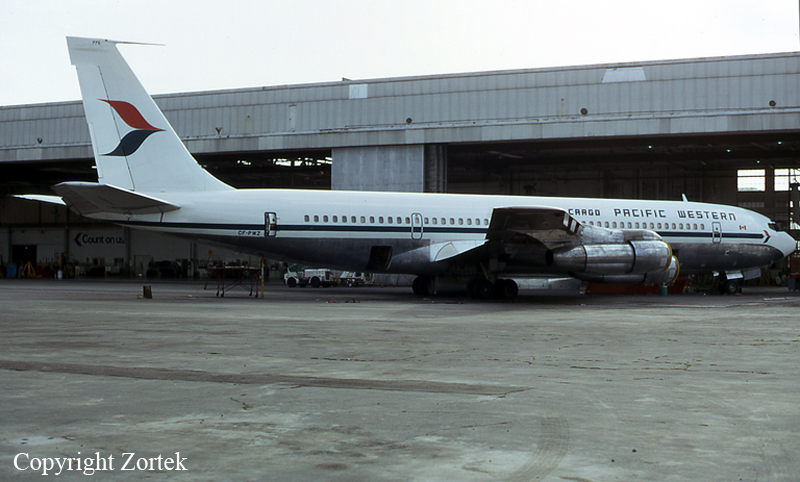
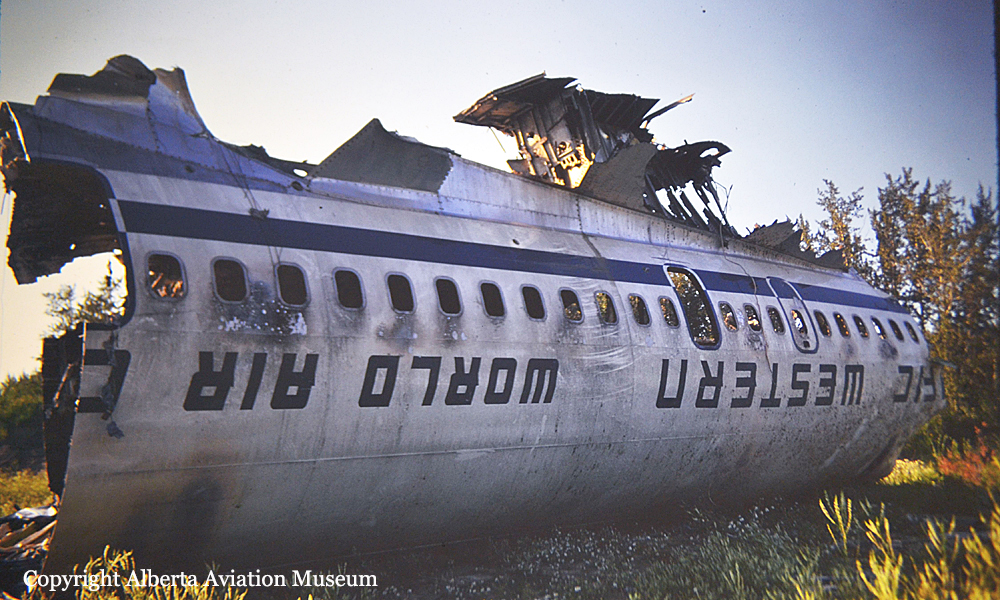
Crash of a Convair CV-640 in Campbell River: 4 killed
Date & Time:
Sep 17, 1969 at 1709 LT
Registration:
CF-PWR
Survivors:
Yes
Schedule:
Vancouver - Campbell River
MSN:
440
YOM:
1965
Flight number:
PW627
Crew on board:
4
Crew fatalities:
Pax on board:
11
Pax fatalities:
Other fatalities:
Total fatalities:
4
Circumstances:
The Convair approached Campbell River with the weather just above minima (2-2,5 miles visibility, 400 feet broken ceiling and wind 110 degrees with gusts to 20 mph. The crew positioned the aircraft visually 2nm south of the airfield on a westerly heading preparatory to attempting an approach to the west. This would involve a right hand circuit flown above the broken south and west of the airport employing DME and ADF information. This improvised approach was not in accordance with published approach procedures under instrument conditions. After flying for 1 minute and 40 seconds the crew turned right. A few seconds after the captain expressed concern, the Convair struck a 1047 feet hill at 932 feet.
Probable cause:
Wrong approach configuration on part of the flying crew who failed to comply with the approved instrument approach procedure.
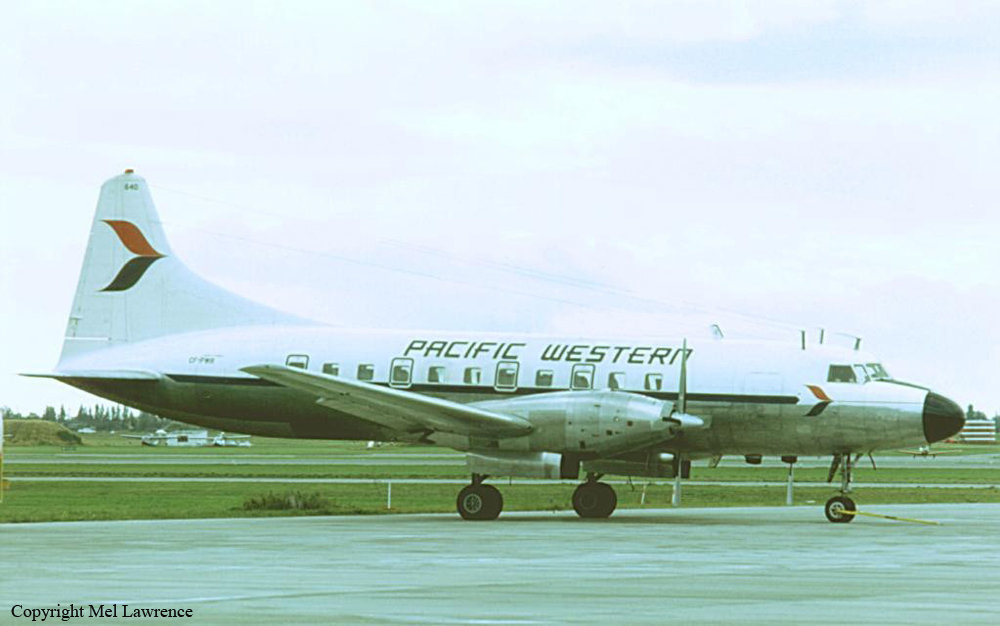
Crash of a Lockheed L-382B-8C Hercules in Cayaya
Date & Time:
Jul 16, 1969
Registration:
CF-PWO
Survivors:
Yes
MSN:
4197
YOM:
1967
Crew on board:
4
Crew fatalities:
Pax on board:
0
Pax fatalities:
Other fatalities:
Total fatalities:
0
Circumstances:
The approach to Cayaya Airport was initiated in heavy rain falls and limited visibility. On short final, the airplane was too low and the right wing struck the ground and was torn off. Out of control, the airplane crashed onto the runway and came to rest. All four crew members escaped uninjured while the aircraft was destroyed.
Probable cause:
Error on the part of the pilot in deciding to land in adverse weather conditions. The lack of assistance from ATC personnel at the airport was considered as a contributing factor.
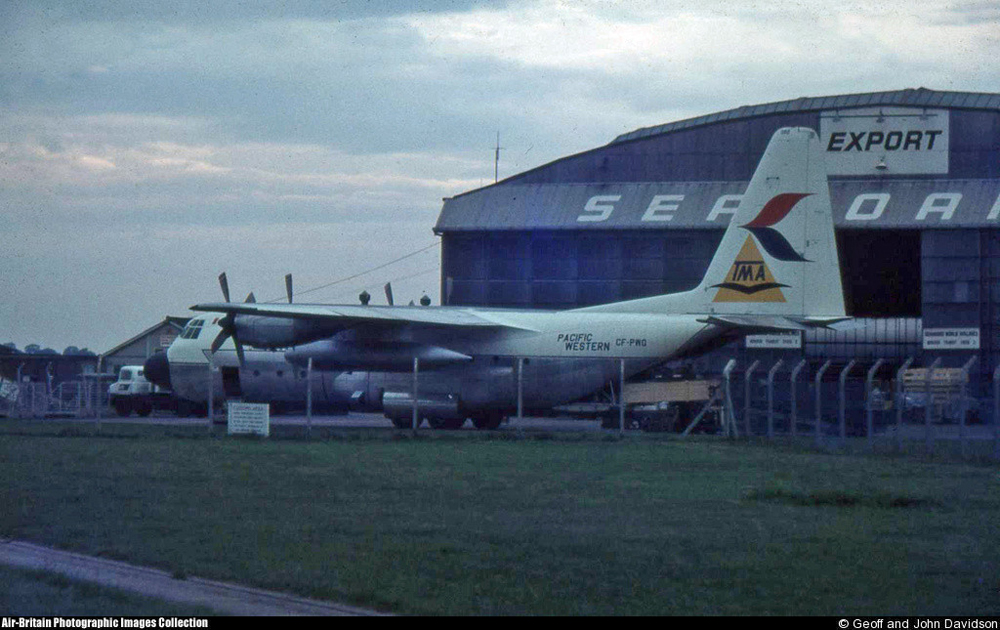
Crash of a Grumman G-21A Goose off Reef Island: 6 killed
Date & Time:
Mar 10, 1966 at 1714 LT
Registration:
CF-MSK
Survivors:
Yes
MSN:
B032
YOM:
1943
Crew on board:
1
Crew fatalities:
Pax on board:
6
Pax fatalities:
Other fatalities:
Total fatalities:
6
Captain / Total hours on type:
246.00
Circumstances:
The descent to Reef Island was completed in marginal weather. On approach, the aircraft struck power cables, stalled and crashed into the Portland Canal. The wreckage was located a day later and the pilot was evacuated while all six passengers were killed. The aircraft sank and was lost. At the time of the accident, weather conditions were poor with snow falls reducing the visibility to half a mile and a wind up to 35 knots.
Probable cause:
It was determined that the pilot continued the descent under VFR mode in adverse weather conditions and misjudged the altitude and clearance. Low ceiling, snow, unfavorable wind conditions and downdrafts/updrafts were considered as contributing factors.
Final Report:
Crash of a Beechcraft 18A in Port Hardy
Date & Time:
Sep 29, 1961
Registration:
CF-BQH
Survivors:
Yes
MSN:
A-318
YOM:
1946
Crew on board:
0
Crew fatalities:
Pax on board:
0
Pax fatalities:
Other fatalities:
Total fatalities:
0
Circumstances:
While descending to Port Hardy, a fire erupted in the cabin. The pilot attempted an emergency landing and while there were no injuries, the aircraft was destroyed by fire.
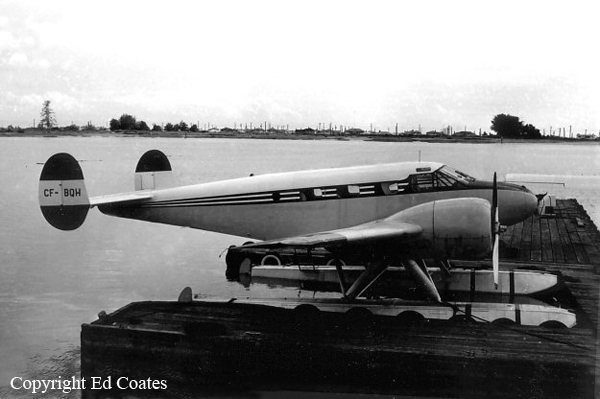
Crash of a Curtiss C-46 Commando in Port Hardy
Date & Time:
Jan 29, 1960 at 1758 LT
Registration:
CF-PWD
Survivors:
Yes
Schedule:
Port Hardy – Comox
MSN:
2940
YOM:
1945
Flight number:
PW104
Crew on board:
3
Crew fatalities:
Pax on board:
48
Pax fatalities:
Other fatalities:
Total fatalities:
0
Circumstances:
Few minutes after his departure from Port Hardy, the pilot informed ATC that the right engine failed and obtained the permission to return for a safe landing. To avoid any stall, the left engine power was increased to its maximum and the crew continued the descent in marginal weather conditions. The airplane landed at high speed and was unable to stop within the remaining distance, overran and eventually crashed against trees in a swampy area. All 51 occupants were evacuated while the aircraft was written off.
Probable cause:
The right engine failed because of a fatigue fracture of the reduction drive ring gear necessitating feathering of the propeller. Due to the presence of a fog bank, a steep approach was necessary with result that the landing was made at a higher than normal airspeed which, coupled with reduced braking action on the wet runway, caused the aircraft to overrun the landing area.
